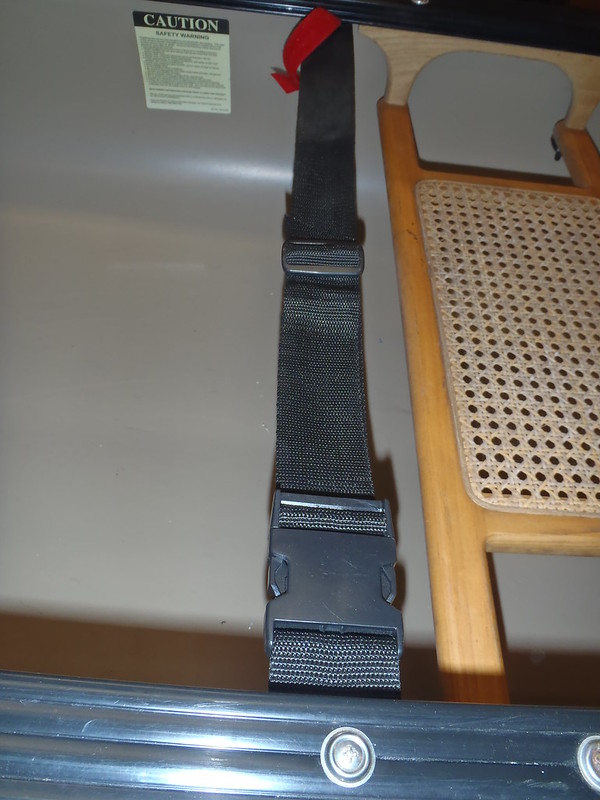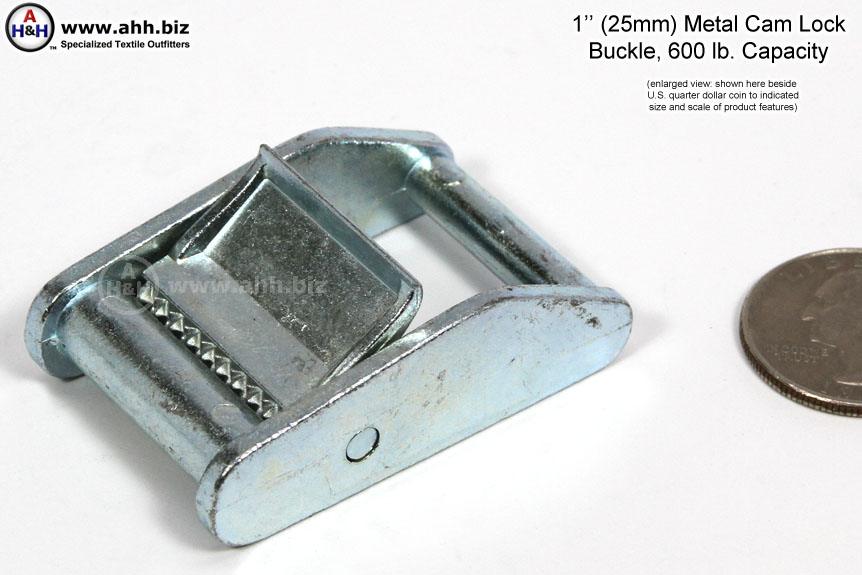I like the idea of a strap yoke, at least for short carries.
Me too, I have them in all of our solo canoes, even the soloized but still heavy Vermont era RX Explorer.
As to the relative strengths of a metal D-ring buckle, a plastic quick release buckle and a metal cam buckle, only empirical testing could verify the truth.
I have some empirical testing. Or at least Ouch My Head testing. I have had two Mohawk buckles shatter while I was under the strap yoke, admittedly with heavier canoes.
Intuitively, I would prefer the D-ring because the tightness of its closure increases with the force applied, unlike the cam or quick buckles, whose closure tightness is not changed by increased force on the strap. In addition, the D-ring has no movable "spring" mechanism to fail.
I have some empirical testing there as well. Two of our heavier RX canoes have paired stainless steel D rings. I
know the webbing or machine screw will fail before the clunky D rings do.
But, even with slack left in the strap yoke, unweaving the webbing from between the Ds can be a nail breaking struggle to get undone. If you pull the webbing strap taut, with no slack, you are screwed. If the webbing has any wet stretch or dry shrink the only recourse may be to get out one of your increasingly abundant knives.
How do you affix the buckle end to the hull when the strap is stowed?
With the Mohawk style release buckle, or the double D ring arrangement, those connections just dangle there, a few inches below the bottom of the inwale. They are not in the way, and do not make any noise. With a cam strap I would probably use the buckle bumpers over the cams just because I have them.
The longer length of webbing that stretches across the hull to that buckle or D ring connection is simply rolled up and held in place under the inwale with a wrap of double sided Velcro.
NOTE OF ORDER. That Velcro restraint needs to be the first strap yoke piece put on the machine screw under the gunwale.
I wouldn't want a buckle banging on the hull while paddling or cartopping, especially a metal buckle on an expensive composite hull.
Well, lets think that one through. The short strap yoke buckle does not make appreciable noise while paddling. If I am flailing around that badly I probably have other things on my mind. Even the SS D rings just hang in place quietly.
Lets think some more. When I put the canoe on the roof racks, by myself, do not help me, I know what I am doing, I am using the strap yoke. I just leave it strapped in place across the gunwales. I will need it again when I take the canoe off. By myself, no, do not help me take the boat off, or even help untie it. I know what I am doing dammit.
I put a ladder lock on the middle section of webbing so I can secure the bitter end through that, to keep it from flapping around while on the roof racks.
The only strap yoke gizmo I've experimented with is a 1" cam strap threaded through inwale slots on wooden gunwales. The strap is too narrow. But the inwale slots are not wide enough for a 2" strap.
I have not tried a typical 1 inch wide cam strap as a short carry yoke. I have made some DIY strap yokes using one and a half inch wide webbing, and did not see any comfort difference on short carries.
I can think of ways via couch potato cogitation, but I'll ask you for your practical experience: What ways would you propose for a sufficiently wide strap yoke to be fitted through narrower inwale slots? The requirement is to use the minimum length of strap possible, but more than one buckle could be used.
I dunno Glenn. I do not see two buckles being an advantage. Then the webbing between them would be
another thing to remember to bring. And not lose. I really like having the whole thing in place, permanently attached, no parts to bring or lose or futz with finding.
If a 1 inch strap yoke, permanently affixed under the gunwales, is uncomfortable on short carries, maybe a sculpted, yoke shaped length of minicel, attached to the center of the webbing strap via Velcro would be sufficiently comfortable.
That would be one more thing to bring and install, but I would hate for your Trapezius or Levator scapulae to hurt. No, I am not rubbing your aching neck!
(If you paste from MS Word in your reply, please turn off smart quotes so you can re-apostrophe yourself.)
I saw that simple solution from Goonstroke, and will eventually try. But, for you, no quotes or apostrophes, and stilted syntax.
 PC180134 by Mike McCrea, on Flickr
PC180134 by Mike McCrea, on Flickr PC190184 by Mike McCrea, on Flickr
PC190184 by Mike McCrea, on Flickr PC170120 by Mike McCrea, on Flickr
PC170120 by Mike McCrea, on Flickr PC180134 by Mike McCrea, on Flickr
PC180134 by Mike McCrea, on Flickr PC190184 by Mike McCrea, on Flickr
PC190184 by Mike McCrea, on Flickr PC170120 by Mike McCrea, on Flickr
PC170120 by Mike McCrea, on Flickr








